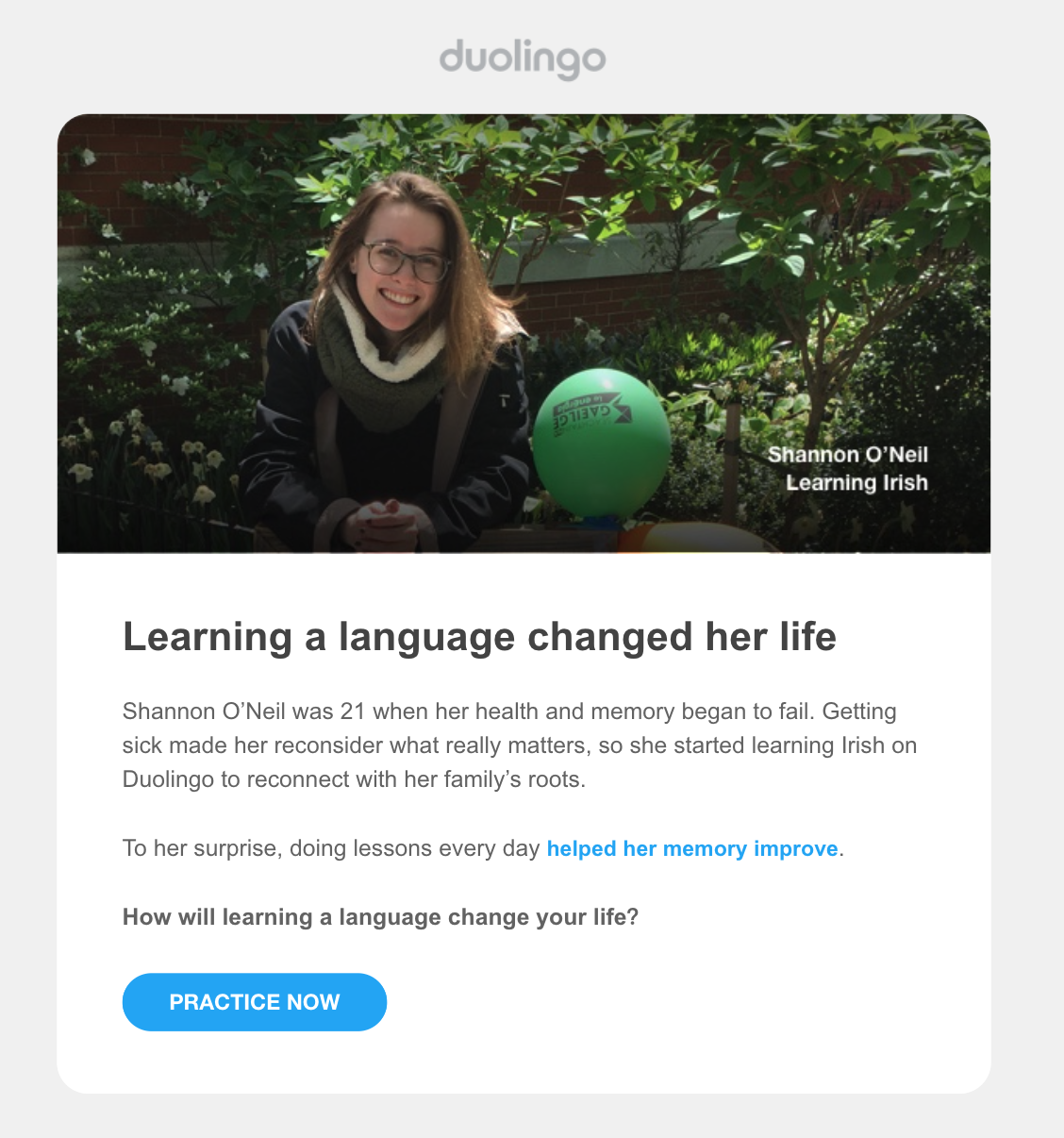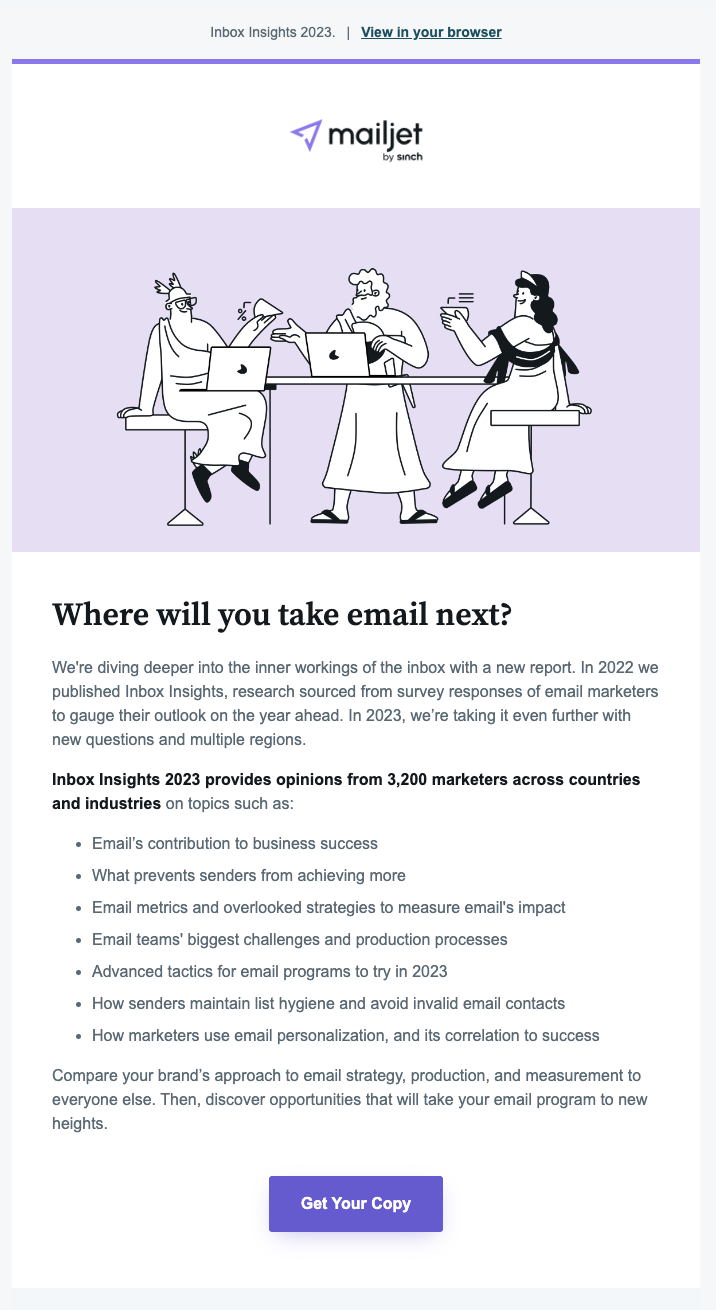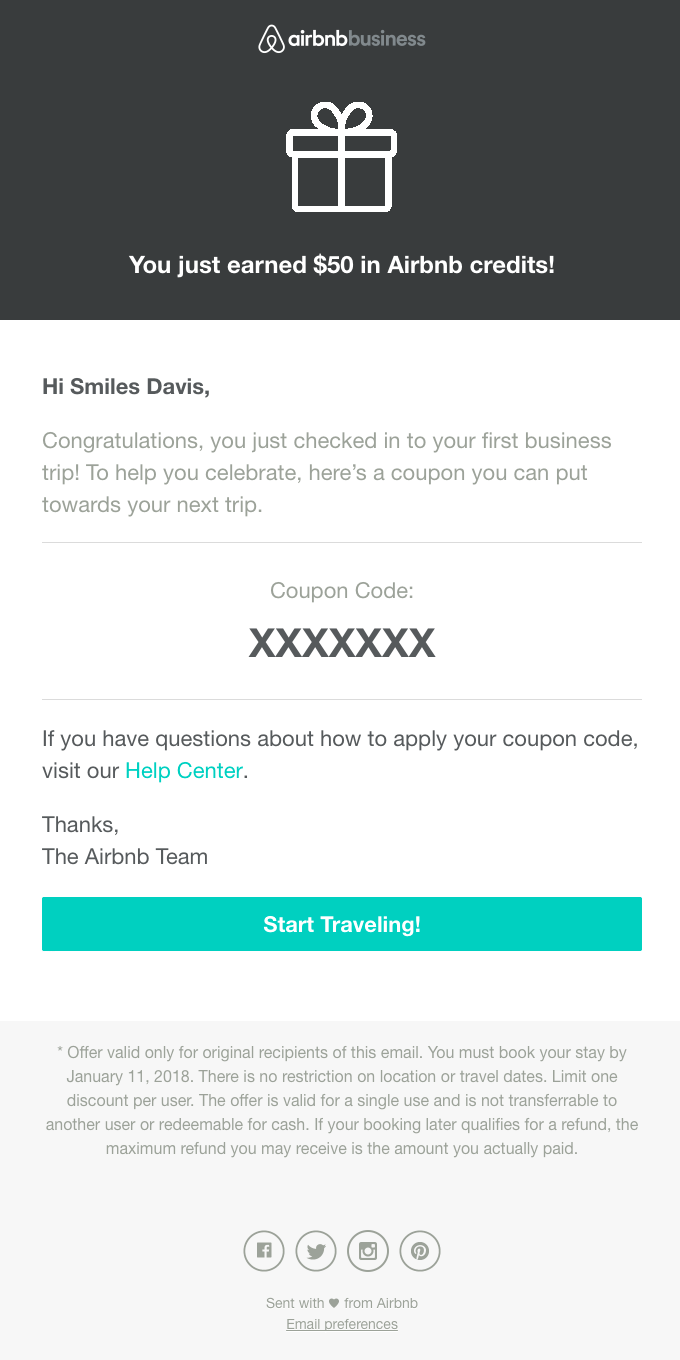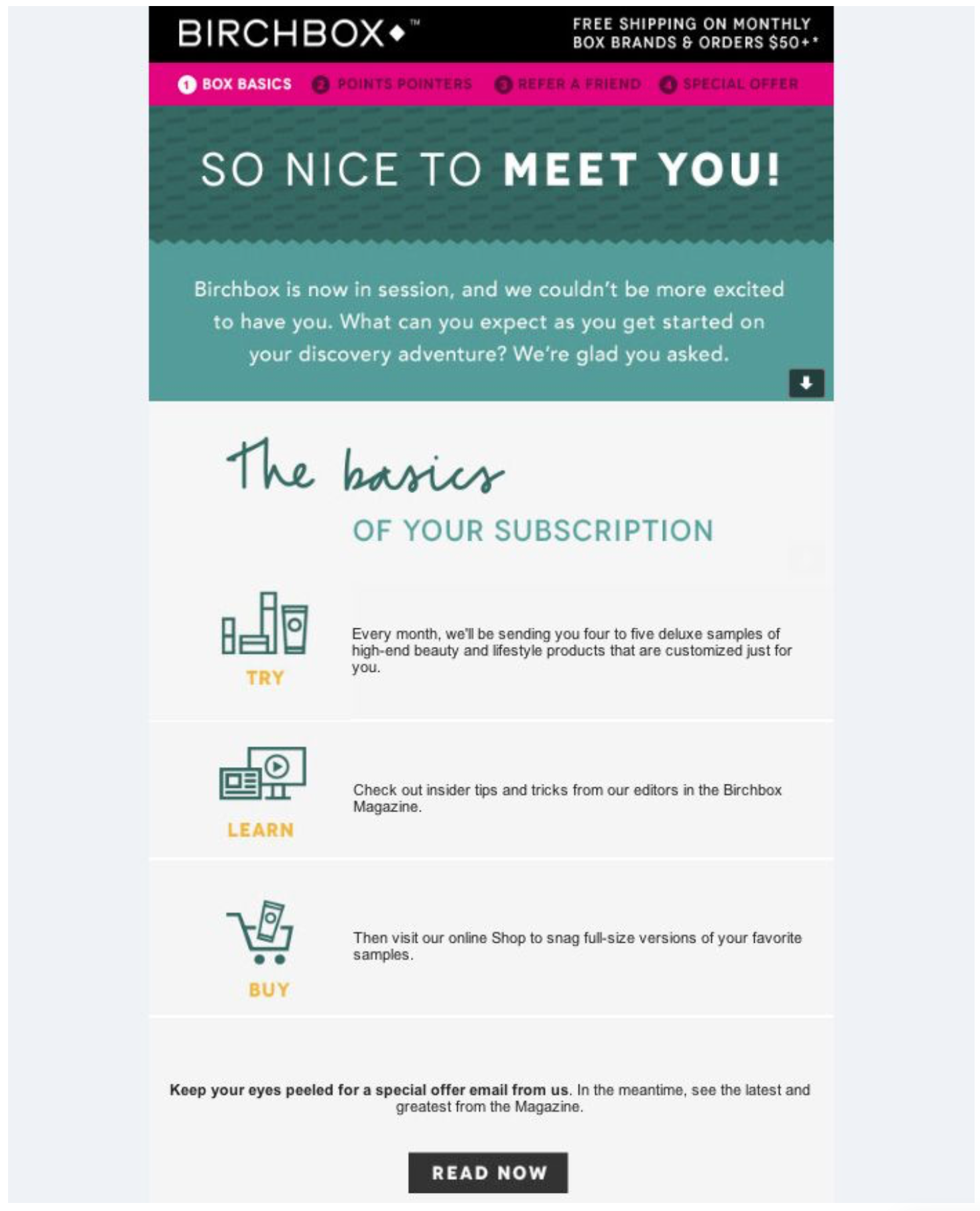Marketing
Relationship marketing: The path to stable revenue growth
We all know it’s easier to keep a customer than to get a new one. And yet a lot of companies struggle with building brand loyalty and maintaining healthy retention rates. Discover how to use relationship marketing to strengthen the bond with your customers and drive more sales.

PUBLISHED ON
You’ve probably heard the saying: “It’s easier to keep a customer than to get a new one.” And while it may sound obvious, many companies still aren’t using relationship marketing strategies to build customer loyalty.
But they should be.
Relationship marketing is a relationship-first, profits-second approach to marketing. But don’t misunderstand the wording of that phrase. That doesn’t mean building relationships is more important than making a profit. It means the relationship comes first, which leads to more profits later. It’s a sequence, not a hierarchy.
Get this sequence right and your competitors will be scrambling to discover your secret sauce. With a recipe so simple yet so untapped, get ready to unlock the best years in your company’s history.
Table of contents
Higher lifetime value
Lower marketing costs
Lower price resistance
More word of mouth
Better reviews
Solve real problems your customers face
Tell relatable stories
Share inspiring data, successes, and case studies
Give stuff away – make customers feel special
Ask for customer feedback
Reward, recognize, and celebrate
1. Plan out your content months in advance
2. Set a cadence and determine your email frequency
3. Use customer journey maps to customize content
4. Set the tone in your onboarding and welcome emails
5. Track metrics associated with relationship marketing
Table of contents
01What is relationship marketing?
02Why is relationship marketing key to customer retention?
03Benefits of relationship marketing
04Relationship marketing examples
05Why email is the ideal marketing channel for relationship marketing
06How to use email to strengthen your relationship marketing strategy
What is relationship marketing?
Relationship marketing looks beyond the initial sale from the moment a new customer comes in the door, visits your website, signs up for your email list, or makes a purchase. It’s a post-purchase marketing strategy that leverages customer data from customer relationship management platforms (CRMs) and other tools to create targeted messages that focus on developing the bond with the user.
The goal of relationship marketing is devoted customer retention. This leads to a higher customer lifetime value. And it results from greater customer satisfaction.
This is a key difference between plain old customer loyalty – which is also good – and relationship marketing, which is better.
A devoted customer base – one cultivated through relationship marketing – thinks of your company in very different terms from typical brand loyalty. There’s an emotional connection. They’ll defend you if someone criticizes your company. They’ll bring their friends and go out of their way to applaud and elevate you in the various online channels and in their personal and business relationships.
Relationship marketing definition: Customer relationship marketing is a strategy that seeks to establish and cultivate a bond between customer and business that deepens over time. It relies on tools that collect and organize customer data so you can target them with tailored messages aimed at improving their customer experience and strengthening the relationship with them.
Why is relationship marketing key to customer retention?
The best and most loyal customers buy from companies they know, like, and trust.
That’s the core goal of relationship marketing – to become known and liked, and to build trust with as many people as possible who are in your target audience. Ultimately, this is the most effective and proven approach for attracting and keeping loyal customers who make repeated purchases, celebrate and advocate for your brand.
The more you can position your company as a trusted ally, someone who has their back and is a useful and reliable friend, the more they’ll keep coming back. You want your customers to feel like you “get” them.

Customer retention happens when your company produces marketing that:
Builds trust and positions you as an ally
Increases your perceived industry authority
Inspires your target audience
Entertains and bonds them to you with personality, shared interests, shared passions
Once you’ve achieved this, customers won’t just stay loyal. They’ll buy from you because it’s you, and price becomes a much lesser issue.
Benefits of relationship marketing
Your business grows in size, stability, and profit the more relationship marketing you consistently produce. Here are the most desirable outcomes:
Higher lifetime value
The greater loyalty that emerges from relationship marketing produces higher customer lifetime value. They’ll spend more over time, and they’ll do so happily because they trust your brand and care for it.
A good relationship marketing strategy will also increase customer retention rates and reduce churn, which ultimately contributes to that higher customer lifetime value.
Lower marketing costs
We all know it – it’s far easier to market to existing customers than to acquire new ones.
And it’s even easier to market to existing loyal customers whose bond with your company goes deeper than superficial benefits like prices and location. When they can’t imagine not shopping with you, no matter what, you can market to them for almost nothing.
Lower price resistance
When relationship marketing has done its job, customers will no longer be put off as much by price, especially if you’re able to clearly communicate the value your product brings and justify the price increase.
You can charge more than your competitors, and your customers will happily pay, because it’s you.
More word of mouth
Customers who have an emotional connection with your company – one that’s stronger than a merely transactional marketing relationship – will tell their friends and business network pals about how great your business is to work with and shop from. Especially if you encourage them to do so with an effective referral marketing strategy.
That means more customers you paid nothing to acquire.
Better reviews
Delighted and loyal customers who have great experiences interacting with your company also leave better online reviews. And they’ll leave even more reviews if you ask them, which is a compelling thing to include in your post-purchase emails.
Relationship marketing examples
Doesn’t this sound great? Sure it does – but how do you do it? What does customer relationship marketing look like? How is it different from other forms of marketing?
Building long-term relationships requires some healthy give and take.That means that you must give stuff away to your current customers. You must deliver value.
What you give away will vary depending on your industry and the needs of your customers. But remember – whatever you give away must work towards helping your customers know, like, and trust you.
Here are a few examples of relationship marketing:
Solve real problems your customers face
Find out some of your customer needs that have even the slightest connection to your products, services, and industry, and give them solutions. This is a form of content marketing, and you can do it with blog posts and white papers. But on a simpler level, you can use email.
And the email doesn’t have to be long.
When you know what drives your customers, you can find all sorts of problems to solve with some concise advice. And as you can see, it doesn’t have to directly relate to anything you sell (but it could).

YNAB offers education on how to manage your finances, an everyday concern for many people.
Tell relatable stories
This is one place you can inject personality in your marketing efforts. If you or someone else is the face of the business, tell stories from their perspective and experience. Did you have to wait in line for too long at some other business? Write a light-hearted story or rant about it, and tie it back to what drives you to provide great service as part of the customer experience.
Stories about kids, friends, family, customers, employees, other businesses,, even stories you see in the media – there’s no end to what you can share that your target audience will relate to and enjoy.
As they see you working through life and learning from it, they’ll relate to your struggles and feel a kinship with you.

Duolingo shares stories of how learning languages has impacted the life of its users.
Share inspiring data, successes, and case studies
Stay current on what’s going on in your industry. Subscribe to industry news sources. Look for stats and studies – or even better, run your own ones!
Plus, not every case study or success story has to come from your business. For example, a furniture store could share stats about how interior design improves home resale value or a smoothie shop could share a case study about a person who improved their health by changing their diet from processed to natural foods.
This kind of content motivates and inspires people. It tells them you’re attempting to make your customers’ lives more fulfilling, successful, easier, and efficient.

At Sinch Mailjet, we regularly share industry benchmarks to help customers push their email strategy further.
Give stuff away – make customers feel special
As you’ve already seen, you can give away content, and that’s a great thing to do. But you can also give away actual rewards. Give customer loyalty discounts and specials. Give free gifts now and then.
If you don’t want to just give things away for free, make it something like a free gift next time they bring a friend, or some other form of referral reward. Certain businesses can send actual thank you cards and other gifts in the mail to their most loyal customers. So, for example, if your business does a lot of shipping, include a free gift in packages for customers on their second or third purchase.

Airbnb offers business customers a discount on their second trip. Source: ReallyGoodEmails
Giveaways can also take the form of contests. And when you can tie contests to some sort of achievement, the effect is magnified. Ideas for that aren’t always easy to come up with, but give it some time and you might surprise yourself.
Ask for customer feedback
Remember, this is about give and take. You’re giving stuff away. Your customers will give you things in return – in addition to their business – when you ask. And you won’t need to give them costly incentives to participate.
Run surveys, polls, and quizzes now and then to give your customers a voice. And report the results so they can see that their participation was important to you. If your survey includes free response questions, you can even quote some of your responders. Everyone likes to be quoted, because it validates their opinion and perspectives.

Lyft asks customers for feedback that will help the brand improve their customer experience.
Reward, recognize, and celebrate
Publicize your customers every chance you can think of (within the bounds of their privacy preferences and any regulations, of course).
For brick and mortar businesses, get photos of your most loyal customers and reward them publicly in some way. If a customer shares an achievement in their lives that your other customers might appreciate, celebrate their wins.
You can also include rewards and loyalty programs here, but the more significant you can make an accomplishment feel, the more meaning it will have. You want to take this beyond mere price whenever possible.
And thank your customers. Thank them for joining your email list. Thank them for making a purchase. Thank them for leaving reviews.

Unsplash sends a message to customers to thank them for their contributions to their image bank. Source: Really Good Emails
Why email is the ideal marketing channel for relationship marketing
Does this all seem like a lot? Actually, it’s not! You can do all of this with just one email per week.
Email is the best media channel by far for developing strong relationships with your customers.
Unlike social media or other forms of mass messaging, email allows you to deliver personal messages that really speak to your customers. You can control all the details, like timing, pacing, length, and who receives your emails. It’s a letter. It’s in their inbox. It’s to them.
Some relationship marketing emails might be relevant to your entire list, but the best campaigns are the ones that are tailored to your audience. Certain emails will be best for particular customer segments and other more specific campaigns can be automated so they reach your customer at the right time.
Relationship marketing is an effective strategy to incorporate into your lifecycle marketing initiatives. Want to learn more? Here are other advantages of using email to build strong relationships with your customers throughout their journey with your brand.
How to use email to strengthen your relationship marketing strategy
If you look through the examples of relationship marketing strategies from earlier in this post, you can see how email is a natural fit for most of them.
Here are a few tips on using email to effectively forge deeper bonds with customers:
1. Plan out your content months in advance
You don’t want to do anything too often. Don’t share customer success stories every day. Effective relationship marketing involves taking the strategies listed earlier, and planning for their use ahead of time.
You plan might look something like this, with relationship marketing campaigns scheduled for the first and third week of the month:
January Week 1: How to solve problem A Week 2: New product announcement Week 3: A story from the owner about a customer service experience Week 4: Valentine’s Day offer
A good plan like this could stretch out for the next six months. The reason you can do this is because relationship marketing is less dependent on deadlines, seasons, or what’s going on in your business. You can produce a year’s worth of relationship marketing content all in January, if you want to commit the time to it.
But even if you don’t produce actual content yet, making a plan now will make it easier each month because you’ll know what you’re writing about for each relationship-focused email.
2. Set a cadence and determine your email frequency
The example plan above assumes you’re sending one email per week, and that two out of four weeks of email marketing are devoted to relationship content. If your company sends two emails per week, you might make one of those two focused on relationship marketing each week.
Whatever your current email cadence and frequency is, you can keep the same one. Just alter the content of some of your emails to focus on relationship marketing. Fewer deals. More connection.
Use all the strategies in this article and ones you find elsewhere. Space them out so you don’t repeat any one approach too frequently. And then implement it.
3. Use customer journey maps to customize content
Different segments of your email subscribers and customers will respond best to different content, and the same is true of relationship marketing. Segmenting based on engagement, spending levels or interest, but strategies like automation allow you to take this even farther and fully customize messages based on the customer journey.
You should automate some relationship marketing to customers to help them onboard or after first purchase. Other content should target long-term customers who have been with you for one year, five years, ten years, and more.
4. Set the tone in your onboarding and welcome emails
When people first opt in to your email list, they need to see from the start there’s something different about your company. During the customer acquisition stage of the buyer’s journey, your onboarding and welcome emails need to make it clear that you’re about more than just offering great deals.

Your welcome series should use several of the tactics listed earlier. Inject some personality. Share a personal story that’s funny, emotional, or whatever other effect you want to have on your new subscribers and customers. Solve a common problem. Share one of your best success stories.
5. Track metrics associated with relationship marketing
Some of these emails aren’t directly selling, so how can you measure your ROI?
First, you can measure engagement on those emails. If people click, respond, share, or fill out surveys, you know people are responding.
But, in terms of ROI, you want to look at your longer-term marketing metrics. Perform this sort of marketing for a year, then look at metrics such as:
Number of repeat customers
Average order size
Average spent per customer per year
Annual revenue
Number of positive online reviews
If you see these metrics trending upward, especially at a faster clip than previous segments of time, that’s a good indication your relationship marketing is paying off.
Take your relationship marketing emails to the next level
Successfully using email for relationship marketing requires understanding the principles of this strategy, but it also comes down to mastering the email marketing fundamentals.
Every strategy and every goal can be achieved and implemented if you have the right plan. That’s why we’ve created our Email Growth Playbook – it’s full of tactics you can use to do things like grow your list, improve deliverability, and use email for lifecycle marketing, which includes post-purchase relationship marketing for customer retention and loyalty.
Already got the basics covered? Start putting your new strategy into action today with Mailjet.








